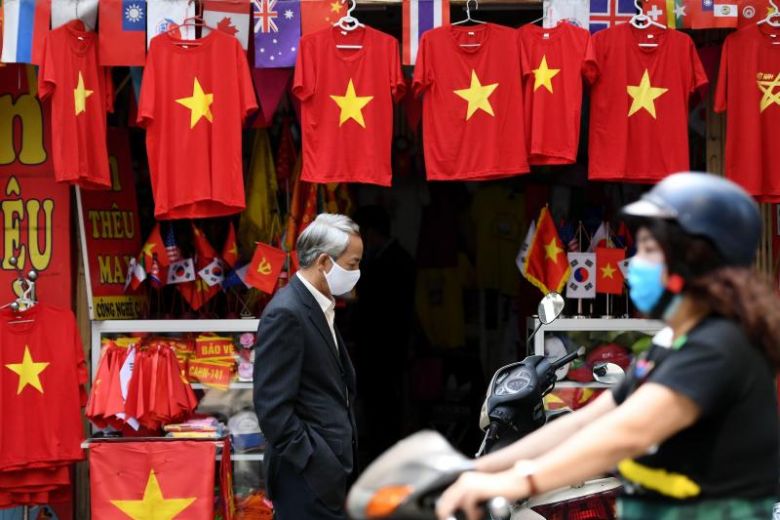Credit photo: A man wearing a protective face mask walks past a souvenir shop in Hanoi, Vietnam, on Feb 26, 2020.PHOTO: AFP
Vietnam, Slovenia, Jordan, Iceland and Greece all followed a similar playbook that thus far have helped curb a larger coronavirus outbreak. Here the story of Vietnam by Vox.
Vietnam, avoided a major outbreak despite having a large land border with China and limited financial resources.
A country’s inherent characteristics, then, seem to matter less than the seriousness and speed of a government’s response.
Which means there are many lessons the world can learn from little-noticed coronavirus success stories. Here are just five of them.
Vietnam stopped a coronavirus outbreak with early and robust action
Vietnam is a lower-income, densely populated country that shares a large land border with China, where the outbreak first began. That, on the surface, would seem to make Vietnam extremely vulnerable to the coronavirus.
But the Vietnamese government acted strongly early, even before the World Health Organization said the outbreak was a global public health emergency, and today it has yet to confirm a single death from the disease.
Its response has so far proven a success by doing three things: a lot of testing, a lot of contract tracing, and a lot of quarantining.
The country started developing tests almost immediately after it confirmed in January that three people traveling back from Wuhan, China — the disease’s origination point — had the disease. Vietnam has since tested nearly 300,000 people.
That seems small compared to the millions tested in the US, for example, but it’s a major outlier in looking at how many people the government tested per confirmed case.
:no_upscale()/cdn.vox-cdn.com/uploads/chorus_asset/file/19946865/number_of_covid_19_tests_per_confirmed_case.png)
Vietnam went through a testing progression: First, it tested people with who were known to have traveled; then it moved on to testing those people’s close contacts; and finally, it began testing anyone presenting coronavirus-like symptoms.
Only recently has the government begun to test widely in major hot spots and risky locations, such as markets in the city of Hanoi.
This plan made sense for one major reason, namely, that focusing testing resources on those around the original sick people and isolating those with symptoms would effectively cut the outbreak off at the source.
The government also made sure few cases could make it into the country by ending flights from the most impacted countries early. Travelers at ports of entry also had to go through temperature screening and had to self-report their health statuses. If someone lied on their health declaration or resisted screening, they could be criminally charged.
Those found to be sick, whether at the airport or elsewhere, were placed in quarantine facilities for 14 days, free of charge. Self-isolation at home isn’t permitted in Vietnam, as the government worries those with the disease might give it to their family members.
It also helps that the public has received and accepted what health officials tell them, as many abide by the government’s guidelines like social distancing and mask wearing. That only makes the country’s broader response easier.Advertisement
Students as of this week are back in class, and the economy is on the way to reopening completely — showing how just how successful an early and robust coronavirus response can be. Vietnam didn’t use fancy technology or new methods. It just did the ordinary things extraordinarily well.
Source: Vox


Leave a Reply